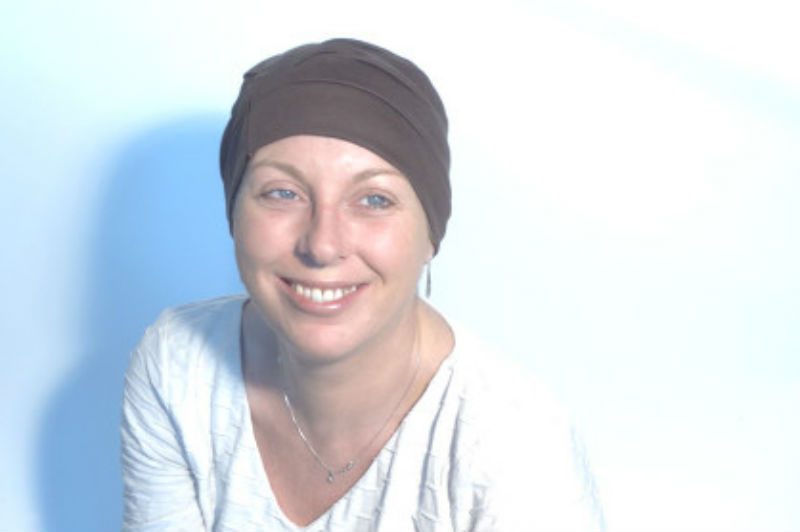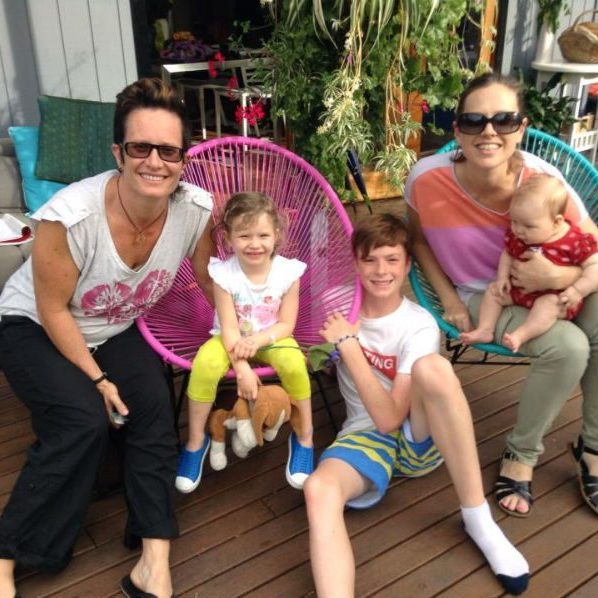
Is It Time to Re-Think Pink?
In October–Breast Cancer Awareness Month–everything is awash in pink. My city’s skyscrapers are lit with pink lights, and municipal fountains run pink. At sports events, even the football players wear the ubiquitous pink ribbons. But as I have been writing for years and New York Times writer Peggy Orenstein brought to international attention on ABC News This Week on October 26, perhaps it’s time to re-think the pink.
Wait, what? What could be wrong with all the pink?
Just ask a breast cancer activist like Orenstein, the group Breast Cancer Action, or me.
In 1997, when she was 35, Orenstein was diagnosed with breast cancer. As she wrote in the New York Times this June, Orenstein did everything she could to produce the best outcome for herself–being cancer free.
But as the writer told ABC, she now regrets having written about that initial cancer diagnosis and how mammography saved her life–because it didn’t.
In 2012, after 15 years of being cancer-free, her cancer returned. That has made Orenstein examine all aspects of breast cancer “trends,” including the whole pinkwashing phenomenon and the movement towards contralateral prophylactic mastectomy (CPM)–removal of both breasts–which Angelina Jolie further popularized.
Orenstein’s research shocked her–and underscored that the pinking of October and beyond had done nothing to lower the rate of breast cancer deaths and may be spreading the medically and scientifically false conclusion that CPM can permanently cure breast cancer that mammography will save a woman’s life.
Awareness may have gotten more women into a mammography machine, but it has only decreased the death rate for breast cancer by a scant two per cent in three decades. Additionally, with diagnoses of cancers that are slow growing or may never metastasize, many women are being talked into CPM who don’t need it.
CPM carries its risks, including infection, lymphedema, scarring and other long-term problems. Moreover, unless they have the breast cancer gene, which can also cause ovarian cancer, the women who opt for CPM don’t move the dial any closer to survival than those who opt for lumpectomy in the affected breast.
Why not?
The mantra to “get a mammogram” simply doesn’t cover the panoply of the breast cancer threat for women. Yes, mammograms show us early cancers. But they are a minute part of the overall issue of how women get breast cancer and how we save our lives when they get it. They also don’t address the more significant issues of surgery, treatment and recurrence, which is Orenstein’s complaint.
I was in my 20s when I got my first breast cancer diagnosis–nearly a decade younger than Orenstein. At 26, I had my right breast cut into it for the first time, and I was terrified of losing my life. By 28, I had had three breast surgeries for tumours that kept returning, one with complications that involved having a lymphatic drain in my breast for weeks.
I was fortunate that my female surgeon (who would later get breast cancer) opted to save my breast with a series of lumpectomies and reconstruct it from the inside out. I could see and feel the difference in that breast, but cosmetically, it looked much like my other breast. She told me that breast cancer doesn’t move from one breast to the other; either the disease metastasizes or it doesn’t,
Still, like Orenstein, my cancer returned years later–the same breast. Now, though, I am a savvier consumer and have refused to let fear dictate bad choices in my treatment. But very few women diagnosed with breast cancer are investigative reporters like Orenstein or myself, and even that doesn’t protect you.
The moment you hear the word cancer-directed at you by the doctor sitting across from you is the instant your life changes forever. All you want is to get as far away from that diagnosis as possible.
The pinking of October and concomitant product placement doesn’t address that reality. Cancer changes you. And there is no cure for most cancers women get, including breast cancer.
Pinkwashing completely ignores other cancers women are dying of–and dying of with either more or as much frequency as they are dying of breast cancer.
With all the pink around, few women know that breast cancer isn’t the leading cause of cancer deaths for women–lung cancer is. And nearly as many women die of colorectal cancer each year as dying from breast cancer.
Yet no one is promoting colorectal screening the way they do mammography, even though a colonoscopy is one of the best cancer-detection tests available. Unlike mammograms, it does not need to be done every year. Uterine cancer, the next giant cancer killer of women, remains, like lung cancer, one of the least detectable cancers. Still, certain lifestyle adjustments and testing can lower the risk and get women early treatment.
So why focus on breast cancer instead of lung or colorectal cancer? Could the whole pinking phenomenon be as simple as breasts are sexy–literally–and lungs and colons are not?
Maybe.
Pinkwashing in America is big money. Women are more inclined to buy products promoting pink in October. And corporations that promote the pink or donate to breast cancer awareness campaigns often are merely deflecting attention away from their involvement in environmental and other damaging products or processes like fracking that have been implicated in causing cancer in women.
We need to broaden our scope beyond pink. We now know so much more about the causes of and links to cancer than we did a decade ago. We now know, for example, what causes cervical cancer, which used to kill thousands more women yearly than it does now. We have a preventative as well as an excellent screening for the disease.
Yet as with all cancer screenings, women have to do the preventative work to help save their own lives and not enough. No one should be dying of cervical cancer in the U.S in 2014, but women still are.
Nearly all cases of cervical cancer are caused by the sexually transmitted disease HPV or human papillomavirus. HPV is the most common STD in the U.S. The CDC reports that 29.8% of women have the disease with few symptoms. Oct. 29, US News & World Report noted that while there is now a vaccine to prevent HPV (which also affects men but with far less cancer risk), few are using it.
The vaccine, first made available in 2006, is recommended in girls and boys between the ages of nine and 21 or until there is sexual activity. Parents have argued that the vaccine promotes sexual activity. According to some studies, it lowers the rate of getting cancer in adult women by as much as 90 per cent. Only about 50 per cent of girls have been getting the vaccine since then.
Making the vaccine necessary rather than optional would help broaden its scope and nearly eradicate cervical cancer within a generation, but awareness is required. Where are the ribbons for that?
We also have to recognize the impact of both smoking and obesity on our cancer prognoses for our futures. As breast cancer specialist Dr Susan Love noted in her interview with me last year, “sitting is the new smoking.” This means we have to get moving to lower our risk for breast cancer, lung, colorectal and uterine cancers, and the fastest growing cancer risk for women, oral cancer.
Pink is pretty–no one can deny that. But we need to stop centring all our attention on breast cancer and expand our consciousness to save our lives. We need more than pink ribbons and lights and yogurt caps. We need to know what is killing us. And what steps we can take to save our own lives.





